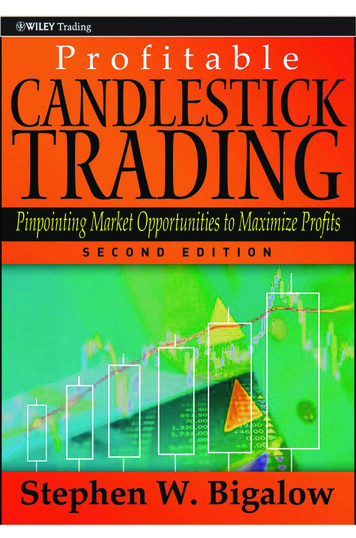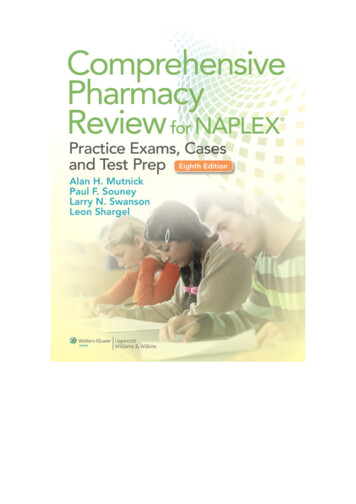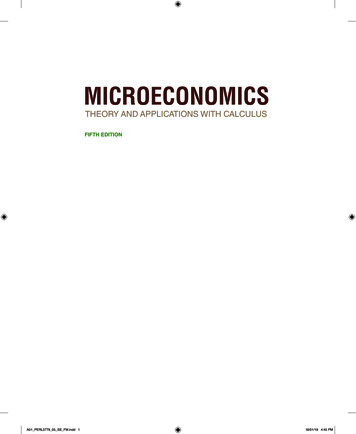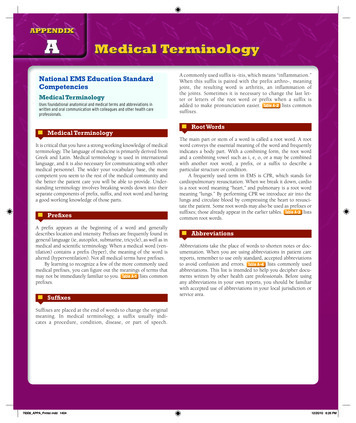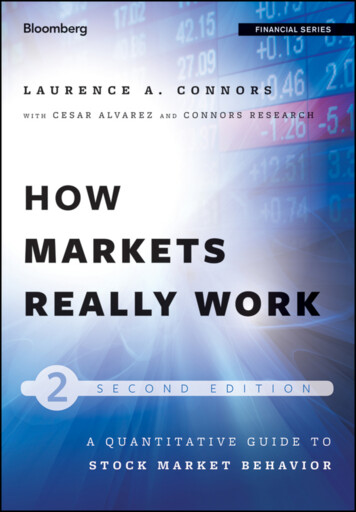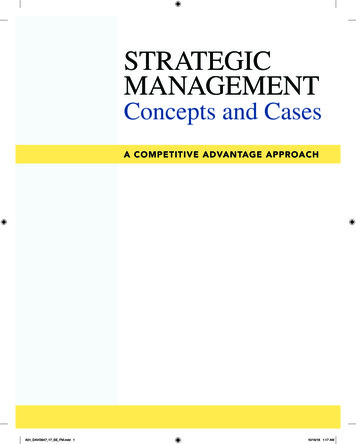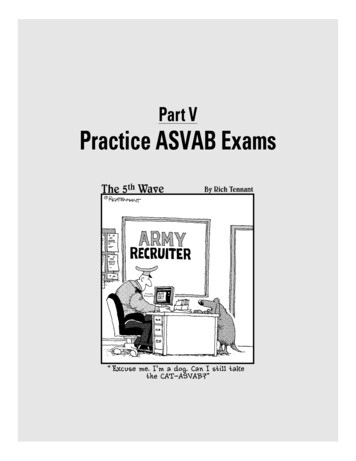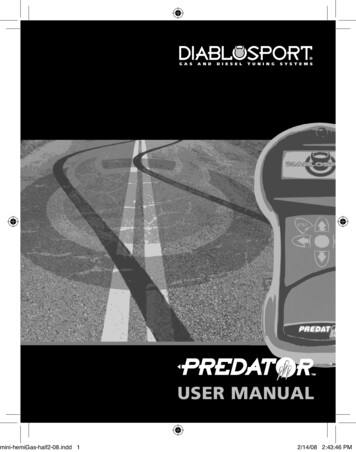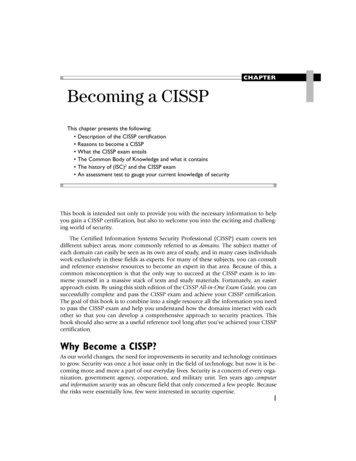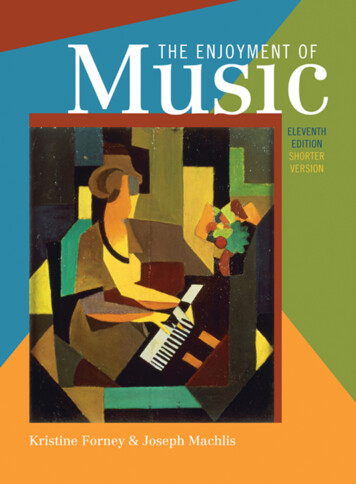
Transcription
ELEVENTH EDITIONThe Enjoyment of MusicS H ORTERVERSI ON
ELEVENTH EDITIONThe Enjoyment of MusicAn Introduction to Perceptive ListeningS H ORTERVERSI ONKristine ForneyProfessor of Music,California State University, Long BeachJoseph MachlisLate Professor Emeritus,Queens College of the City University of New YorkBW. W. NORTON & COMPANY NEW YORK LONDON
W. W. Norton & Companyhas been independent since its founding in 1923, when William Warderrst published lectures delivered at the People’s Institute, the adultrm soon expanded its program beyond the Institute, publishing books by celebrated academics from America and abroad. By mid-century, the two majorrmly established. In the 1950s,comparable number of trade, college, and professional titles published each year—W. W. Norton & Companystands as the largest and oldest publishing house owned wholly by its employees.for Earle Fenton PalmerCopyright (c) 2011, 2007, 2003, 1999, 1995, 1990, 1984, 1977, 1970, 1963, 1955 by W. W. Norton & Company, Inc.Copyright (c) 1991, 1983 by Joseph MachlisAll rights reservedPrinted in the United States of AmericaEditor: Maribeth PayneDevelopmental, Project, and Copy Editor: Kathryn TalalayManaging Editor, College: Marian JohnsonElectronic Media Editor: Steve HogeMarketing Manager: Amber ChowPhoto Editor: Junenoire MitchellPhoto Researcher: Julie TesserAncillary Editor: Allison Courtney HirscheyEditorial Assistant: Ariella FossArt Director: Hope Miller GoodellDesigner: Lisa Buckley DesignSenior Production Manager: Jane SearleMusic Typesetter: David BotwinikPage Layout: Carole DesnoeseldIndexer: Marilyn BlissComposition: TexTech InternationalManufacturing: Courier, KendallvilleLibrary of Congress Cataloging-in-Publication DataForney, Kristine.The enjoyment of music: an introduction to perceptive listening / Kristine Forney, Joseph Machlis. — 11th ed.,shorter versionp. cm.Includes index.ISBN: 978-0-393-93415-1 (pbk.)1. Music appreciation. I. Machlis, Joseph, 1906–1998. II.Title.MT90.M23 2011b780—dc222010038437ISBN: 978-0-393-12015-8 (pdf. ebook)W. W. Norton & Company, Inc., 500 Fifth Avenue, New York, NY 10110www.norton.comW. W. Norton & Company Ltd., Castle House, 75/76 Wells Street, London W1T 3QT1234567890
ContentsListening GuidesListening ActivitiesHere & There, Then & NowOnline Video and iMusic ExamplesVideosiMusicPreface: The Enjoyment of Music PackagexiiixvxvixviixviixviixixPart I Materials of Music3PRELUDE 1 Listening to Music Today4LISTENING ACTIVITY: A Preview MEET THE PERFORMERS: Wynton Marsalis MEET THE PERFORMERS: Lang LangCHAPTER 1 Melody: Musical Line9The Structure of Melody LISTENING ACTIVITY: MelodyCHAPTER 2 Rhythm and Meter: Musical Time13Metrical Patterns LISTENING ACTIVITY: RhythmCHAPTER 3 Harmony: Musical Space17The Organization of Harmony Consonance and Dissonance LISTENINGACTIVITY: HarmonyCHAPTER 4 The Organization of Musical Sounds20The Formation of Major and Minor Scales Diatonic and Chromatic Scales Other Scale Types The Major-Minor System The Key as a Form-BuildingElement LISTENING ACTIVITY: Musical Scales and KeyCHAPTER 5 Musical Texture26Types of Texture Contrapuntal Devices Musical Texture and the Listener LISTENING ACTIVITY: TextureCHAPTER 6 Musical Form30Structure and Design in Music Two-Part and Three-Part Form The BuildingBlocks of Form LISTENING ACTIVITY: Musical Formv
viContentsCHAPTER 7 Musical Expression: Tempo and Dynamics35The Pace of Music Loudness and Softness Tempo and Dynamics asElements of Musical Expression LISTENING ACTIVITY: Tempo and DynamicsCHAPTER 8 Voices and Musical Instrument Families39Musical Timbre The Voice as Instrument MEET THE PERFORMERS:Luciano Pavarotti The World of Musical Instruments MEET THEPERFORMERS: Anoushka Shankar LISTENING ACTIVITY: VoicesCHAPTER 9 Western Musical Instruments43String Instruments MEET THE PERFORMERS: Yo-Yo Ma Woodwind Instruments MEET THE PERFORMERS: James Galway Brass Instruments MEET THEPERFORMERS: Carol Jantsch Percussion Instruments MEET THE PERFORMERS:Evelyn Glennie Keyboard Instruments LISTENING ACTIVITY: Western InstrumentsCHAPTER 10 Musical Ensembles53Choral Groups MEET THE PERFORMERS: The King’s Singers InstrumentalChamber Ensembles MEET THE PERFORMERS: The Ying Quartet MEET THEPERFORMERS: The Silk Road Ensemble The Orchestra Concert, Jazz, andRock Bands The Role of the Conductor MEET THE PERFORMERS: GustavoDudamel LG 1 BRITTEN: The Young Person’s Guide to the Orchestra TheOrchestra in Action LISTENING ACTIVITY: Reviewing EnsemblesCHAPTER 11 Style and Function of Music in Society63HTTN 1: The Role of Music in Society The Concept of Style Musical Stylesin History LISTENING ACTIVITY: Comparing Styles 1 Historical PeriodsPart 2Medieval andRenaissance Music69Timeline: Medieval/RenaisancePRELUDE 2 The Culture of the Middle Agesand Renaissance70The Medieval Church The Arts in the Renaissance Musicians in Medievaland Renaissance SocietyCHAPTER 12 Sacred Music in the Middle Ages75The Mass Life in the Medieval Cloister The Music of Hildegard of Bingen LG 2 HILDEGARD OF BINGEN: Alleluia, O virga mediatrix The Rise of Polyphony LG 3 NOTRE DAME SCHOOL: Gaude Maria virgo LISTENING ACTIVITY:Comparing Styles of Sacred MusicCHAPTER 13 Secular Music in the Middle AgesMedieval Minstrels LG 4 ANONYMOUS: Sumer is icumen in EarlyInstrumental Music The French Ars nova LG 5 MACHAUT: Puis qu’en oubli HTTN 2: Opening Doors to the East82
ContentsCHAPTER 14 Renaissance Sacred Music89Josquin des Prez and the Motet LG 6 JOSQUIN: Ave Maria . . . virgo serena The Renaissance Mass Palestrina and the Mass LG 7 PALESTRINA: PopeMarcellus Mass, GloriaCHAPTER 15 Renaissance Secular Music96Music in Court and City Life The Italian Madrigal LG 8 ARCADELT: Il biancoe dolce cigno The English Madrigal LG 9 FARMER: Fair Phyllis InstrumentalDance Music LG 10 SUSATO: Three Dances LISTENING ACTIVITY: ComparingStyles 2 Medieval, Renaissance, and BaroquePart 3 The Baroque Era105Timeline: Baroque EraPRELUDE 3 The Baroque Spirit106Main Currents in Baroque Music The Rise of the Virtuoso Musician HTTN 3: The Rise of the Professional Female SingerCHAPTER 16 Baroque Opera and Its Components113The Components of Opera The Spread of Opera LG 11 PURCELL: Didoand Aeneas Barbara Strozzi and the Baroque Aria LG 12 STROZZI: AmordormiglioneCHAPTER 17 The Baroque Cantata and Oratorio120Bach and the Church Cantata LG 13 BACH: Cantata No. 140, Wachet auf Handel and the Oratorio LG 14 HANDEL: Messiah LISTENING ACTIVITY:Reviewing Baroque Vocal GenresCHAPTER 18 Baroque Instruments and the Suite130The Rise of Instrumental Music The Baroque Suite Handel and theOrchestral Suite LG 15 HANDEL: Water Music Music at the French RoyalCourt LG 16 MOURET: Rondeau, from Suite de symphoniesCHAPTER 19 The Baroque Concerto136Antonio Vivaldi and the Solo Concerto LG 17 VIVALDI: The Four SeasonsCHAPTER 20 Other Baroque Instrumental Music140Baroque Keyboard Instruments Keyboard Forms The Fugue and Its Devices Bach’s Keyboard Fugues LG 18 BACH: Contrapunctus 1, from The Art of Fugue Looking Ahead to the Classical Era LISTENING ACTIVITY: Comparing Styles 3Baroque to Classicalvii
viiiContentsPart 4 Eighteenth-CenturyClassicism149Timeline: Classical EraPRELUDE 4 Classicism in the Arts150Classicism in Music Elements of Classical Style The Patronage SystemCHAPTER 21 The Development of Classical Forms155Expanding Musical Ideas Classical Forms LISTENING ACTIVITY: ThematicDevelopment The First Movement The Second Movement The ThirdMovement The Fourth Movement The Multimovement Cycle as a Whole LISTENING ACTIVITY: Hearing Larger FormsCHAPTER 22 Classical Chamber Music163The String Quartet LG 19 HAYDN: String Quartet, Op. 76, No. 3 (Emperor) Mozart and Chamber Music LG 20 MOZART: Eine kleine NachtmusikCHAPTER 23 The Classical Symphony170Historical Background The Classical Orchestra The Movements of theSymphony Haydn and the Symphony LG 21 HAYDN: Symphony No. 100in G major (Military) Beethoven and the Symphony in Transition LG 22BEETHOVEN: Symphony No. 5 in C minor HTTN 4: Beethoven and thePolitics of MusicCHAPTER 24 The Classical Concerto182The Movements of the Concerto LG 23 MOZART: Piano Concerto in G major, K.453 Famous Women Virtuosos LISTENING ACTIVITY: Mozart and the ConcertoCHAPTER 25 The Sonata in the Classical Era186The Movements of the Sonata LG 24 BEETHOVEN: Piano Sonata in C-sharpminor, Op. 27, No. 2 (Moonlight)CHAPTER 26 Classical Choral Music and Opera189Mass, Requiem, and Oratorio Classical Opera HTTN 5: Mozart and the Worldof Opera LG 25 MOZART: Don Giovanni From Classicism to Romanticism LISTENING ACTIVITY: Comparing Styles 4 Classical to RomanticPart 5 The Nineteenth Century203Timeline: Romantic EraPRELUDE 5 The Spirit of RomanticismFrench Revolution Romantic Writers and Artists Romanticism in Music Romantic Style Traits The Musician in Society204
ContentsCHAPTER 27 Song in the Romantic Era211Types of Song Structure The Lied Schubert and the Lied LG 26 SCHUBERT:Elfking Robert Schumann and the Song Cycle LG 27 SCHUMANN: “In thelovely month of May,” from A Poet’s LoveCHAPTER 28 Romantic Piano Music219The Short Lyric Piano Piece Chopin and Piano Music LG 28 CHOPIN:Mazurka in B-flat minor, Op. 24, No. 4 HTTN 6: Chopin and the Salon FannyMendelssohn Hensel and the Piano Miniature LG 29 FANNY MENDELSSOHNHENSEL: September: At the River, from The YearCHAPTER 29 Music in Nineteenth-Century America227Stephen Foster and American Popular Music LG 30 FOSTER: Jeanie withthe Light Brown HairCHAPTER 30 Romantic Program Music230Varieties of Program Music Berlioz and the Program Symphony LG 31BERLIOZ: Symphonie fantastique Musical Nationalism HTTN 7: Music,Folklore, and Nationalism A Czech Nationalist: Bedr̆ich Smetana LG 32SMETANA: The Moldau A Scandinavian Nationalist: Edvard Grieg LG 33GRIEG: Peer Gynt, Suite No. 1, Op. 46 Other NationalistsCHAPTER 31 Absolute Music in theNineteenth Century244The Romantic Symphony Brahms and the Late Romantic Symphony LG34 BRAHMS: Symphony No. 3 in F major HTTN 8: Dvořák, the Symphony,and African-American Music The Romantic Concerto LISTENING ACTIVITY:Romantic-Era Orchestral MusicCHAPTER 32 National Schools of Romantic Opera252Women in Opera Verdi and Italian Opera LG 35 VERDI: Rigoletto Wagnerand the Music Drama in Germany LG 36 WAGNER: Die WalküreCHAPTER 33 Late Romantic and Post-Romantic Music267Romantic Choral Music LG 37 VERDI: Requiem, Libera me HTTN 9: Verdiand the Power of Music Tchaikovsky and the Ballet MEET THE PERFORMERS:Mikhail Baryshnikov LG 38 TCHAIKOVSKY: The Nutcracker The PostRomantic Era Puccini and Verismo Opera LG 39 PUCCINI: Madame Butterfly LISTENING ACTIVITY: Opera in China and the West Looking Ahead toModernist Trends LISTENING ACTIVITY: Comparing Styles 5 Romantic toTwentieth Centuryix
xContentsPart 6Impressionism and theEarly Twentieth Century283Timeline: Impressionism and Early 20th CenturyPRELUDE 6 Modernism in the Arts284The Reaction against Romanticism Expressionism NeoclassicismCHAPTER 34 Impressionism and Post-Impressionism288HTTN 10: The Paris World Exhibition of 1889: A Cultural Awakening LG 40DEBUSSY: Prelude to “The Afternoon of a Faun” LISTENING ACTIVITY:Music at the 1889 World’s FairCHAPTER 35 Early Modern Musical Style295The New Rhythmic Complexity The New Melody The New Harmony Orchestration New Conceptions of Form LISTENING ACTIVITY: PreviewingEarly-20th-Century StylesCHAPTER 36 Music of the Early Modernists300Stravinsky and the Revitalization of Rhythm LG 41 STRAVINSKY: TheRite of Spring Schoenberg and the Second Viennese School LG 42SCHOENBERG: Pierrot lunaire Berg and Early-Twentieth-Century Opera LG 43 BERG: WozzeckCHAPTER 37 European National Schools313Béla Bartók and the Eastern European Tradition LG 44 BARTÓK: Concerto forOrchestra HTTN 11: Bartók—A Folk-Song Collector The German ComposerCarl Orff LG 45 ORFF: Carmina buranaCHAPTER 38 American Modernism in Music321MEET THE PERFORMERS: The United States Marine Band The ModernistCharles Ives and New England Culture LG 46 IVES: Country Band MarchCHAPTER 39 Nationalism in the AmericasWilliam Grant Still: African-American Composer LG 47 STILL: Suite forViolin and Piano Aaron Copland: American Nationalist LG 48 COPLAND:Appalachian Spring MEET THE PERFORMERS: Martha Graham Art MusicTraditions in Mexico Silvestre Revueltas: Mexican Nationalist LG 49REVUELTAS: Homage to Federico García Lorca Music from the MariachiTradition HTTN 12: Preserving Mexico’s Musical Traditions LISTENINGACTIVITY: The Sounds of the Mariachi Tradition LISTENING ACTIVITY:Comparing Styles 6 Early to Later Twentieth-Century326
ContentsPart 7 Music beyondthe Concert Hall341Timeline: Music beyond the Concert HallPRELUDE 7 The Rise of American Popular Styles342CHAPTER 40 Ragtime, Blues, and Jazz346Scott Joplin and Ragtime LG 50 JOPLIN: Maple Leaf Rag Blues and NewOrleans Jazz HTTN 13: The Roots of Jazz The Jazz Singer Billie Holiday MEET THE PERFORMERS: Billie Holiday LG 51 HOLIDAY: Billie’s Blues TheSwing Era and Beyond MEET THE PERFORMERS: Duke Ellington LG 52STRAYHORN/ELLINGTON: Take the A Train Bebop and Later Jazz StylesCHAPTER 41 Musical Theater357The Development of American Musical Theater George Gershwin and theMerger of Classical and Jazz Styles LG 53 GERSHWIN: Porgy and Bess MEET THE PERFORMERS: Leontyne Price Leonard Bernstein and theBroadway Musical LG 54 BERNSTEIN: West Side StoryCHAPTER 42 Music for Films367Star Wars and Beyond LG 55 WILLIAMS: Raiders MarchCHAPTER 43 The Many Voices of Rock372MEET THE PERFORMERS: Mick Jagger MEET THE PERFORMERS: BobDylan LISTENING ACTIVITY: The Influence of Bob Dylan The Eclecticismof the 1970s The 1980s and Beyond MEET THE PERFORMERS: Nirvana LISTENING ACTIVITY: Comparing Styles 7 Pop Rock to GrungePart 8 World War II and Beyond385Timeline: World War II and BeyondPRELUDE 8New Directions in the Arts386Postmodernism in Music MEET THE PERFORMERS: Laurie AndersonCHAPTER 44 The New Virtuosity of the Modern Age392George Crumb and Avant-Garde Virtuosity LG 56 CRUMB: Caballito negro HTTN 14: Modern Performers Say “Yes, We Can!”CHAPTER 45 Contemporary ComposersLook to World MusicImportant Experimenters The Music of John Cage LG 57 CAGE: Sonatasand Interludes The Javanese Gamelan LISTENING ACTIVITY: Exploring the396xi
xiiContentsJavanese Gamelon Multicultural Influences in Contemporary Society HTTN 15:Improvisation as Compositional Process Bright Sheng and the Meeting of MusicalCultures LG 58 SHENG: China Dreams, Prelude Chinese Traditional Music andInstruments LISTENING ACTIVITY: The Sounds of Traditional Chinese MusicCHAPTER 46 Technology and Music407The Technological Revolution Important Figures in Electronic Music MEETTHE PERFORMERS: Tod Machover LISTENING ACTIVITY: Hyperinstrumentsand Musical InteractivityCHAPTER 47 Some Current Trends413Jennifer Higdon and Romantic Ideals LG 59 HIGDON: blue cathedral JohnCorigliano and the Contemporary Song Cycle LG 60 CORIGLIANO: Prelude,from Mr. Tambourine Man: Seven Poems of Bob Dylan Minimalism and PostMinimalism Arvo Pärt and Spiritual Minimalism LG 61 PÄRT: Cantate Dominocanticum novum HTTN 16: Murders, Monsters, and Mayhem in Modern Opera John Adams and Post-Minimalism LG 62 ADAMS: Doctor Atomic LISTENINGACTIVITY: Comparing Styles 8 Contemporary Choral MusicCODA428AppendicesI. Musical NotationII. GlossaryIII. Answers to Listening ActivitiesA-1A-5A-23CreditsA-25IndexA-29World MapA-60
Listening 5.36.37.38.39.40.41.42.43.Britten: The Young Person’s Guide to the OrchestraHildegard of Bingen: Alleluia, O virga mediatrixNotre Dame School: Gaude Maria virgoAnonymous: Sumer is icumen inMachaut: Puis qu’en oubliJosquin: Ave Maria . . . virgo serenaPalestrina: Pope Marcellus Mass, GloriaArcadelt: Il bianco e dolce cignoFarmer: Fair PhyllisSusato: Three DancesPurcell: Dido and Aeneas, Act III, excerptsStrozzi: Amor dormiglioneBach: Cantata No. 140, Wachet auf, Nos. 1 and 4Handel: Messiah, Nos. 18 and 44Handel: Water Music, Alla hornpipeMouret: Rondeau, from Suite de symphoniesVivaldi: Spring, from The Four Seasons, IBach: Contrapunctus 1, from The Art of FugueHaydn: String Quartet, Op. 76, No. 3 (Emperor), IIMozart: Eine kleine Nachtmusik, K. 525, I and IIIHaydn: Symphony No. 100 in G major (Military), IIBeethoven: Symphony No. 5 in C minor, Op. 67Mozart: Piano Concerto in G major, K. 453, IBeethoven: Piano Sonata in C-sharp minor, Op. 27, No. 2 (Moonlight), IMozart: Don Giovanni, Act 1, Scene 2Schubert: Elf king (Erlkönig)Schumann: “In the lovely month of May,” from A Poet’s LoveChopin: Mazurka in B-flat minor, Op. 24, No. 4Fanny Mendelssohn Hensel: September: At the River, from The Year (Das Jahr)Foster: Jeanie with the Light Brown HairBerlioz: Symphonie fantastique, IVSmetana: The MoldauGrieg: Peer Gynt, Suite No. 1, Op. 46, excerptsBrahms: Symphony No. 3 in F major, IIIVerdi: Rigoletto, Act III, excerptsWagner: Die Walküre, Act III, Opening (Ride of the Valkyries)Verdi: Requiem, Libera me, excerptTchaikovsky: The Nutcracker, Two DancesPuccini: Madame Butterfly, “Un bel dì”Debussy: Prelude to “The Afternoon of a Faun”Stravinsky: The Rite of Spring, Part 1, excerptsSchoenberg: Pierrot lunaire, No. 18Berg: Wozzeck, Act III, Scene 3270273277292303307310xiii
.60.61.62.Listening GuidesBartók: Concerto for Orchestra, IVOrff: O fortuna, from Carmina buranaIves: Country Band MarchStill: Suite for Violin and Piano, IIICopland: Appalachian Spring, excerptsRevueltas: Homage to Federico García Lorca, Son (III)Joplin: Maple Leaf RagHoliday: Billie’s BluesStrayhorn/Ellington: Take the A TrainGershwin: Summertime, from Porgy and BessBernstein: Mambo and Tonight Quintet, from West Side StoryWilliams: Raiders March, from Raiders of the Lost ArkCrumb: Caballito negroCage: Sonata V, from Sonatas and InterludesSheng: China Dreams, PreludeHigdon: blue cathedral, excerptCorigliano: Prelude, from Mr. Tambourine Man: Seven Poems of Bob DylanPärt: Cantate Domino canticum novumAdams: Doctor Atomic, 403415418422426
Listening ActivitiesA PreviewMelodyRhythmHarmonyMusical Scales and KeyTextureMusical FormTempo and DynamicsVoicesWestern InstrumentsReviewing EnsemblesComparing Styles 1: Historical PeriodsComparing Styles of Sacred MusicComparing Styles 2: Medieval, Renaissance, and BaroqueReviewing Baroque Vocal GenresComparing Styles 3: Baroque to ClassicalThematic DevelopmentHearing Larger FormsMozart and the ConcertoComparing Styles 4: Classical to RomanticRomantic-Era Orchestral MusicOpera in China and the WestComparing Styles 5: Romantic to Twentieth CenturyMusic at the 1889 World’s FairPreviewing Early-20th-Century StylesThe Sounds of the Mariachi TraditionComparing Styles 6: Early to Later Twentieth-CenturyThe Influence of Bob DylanComparing Styles 7: Pop Rock to GrungeExploring the Javanese GamelanThe Sounds of Traditonal Chinese MusicHyperinstruments and Musical InteractivityComparing Styles 8: Contemporary Choral 1251279281294299338339376383401405412428xv
Here & There, Then & Now1.2.3.4.5.6.7.8.9.10.11.12.13.14.15.16.xviThe Role of Music in SocietyOpening Doors to the EastThe Rise of the Professional Female SingerBeethoven and the Politics of MusicMozart and the World of OperaChopin and the SalonMusic, Folklore, and NationalismDvořák, the Symphony, and African-American MusicVerdi and the Power of MusicThe Paris World Exhibition of 1889: A Cultural AwakeningBartók—A Folk-Song CollectorPreserving Mexico’s Musical TraditionsThe Roots of JazzModern Performers Say “Yes, We Can!”Improvisation as Compositional ProcessMurder, Monsters, and Mayhem in Modern 4
Online Video and iMusic ExamplesA VideosOrchestra and Chamber Music VideosBach: Contrapunctus I, from The Art of Fugue (stringquartet)Beethoven: Symphony No. 5 in C minor, IMozart: Concerto for Piano and Orchestra in Gmajor, K. 453, IMozart: Eine kleine Nachtmusik, ISousa: Washington Post March (concert band)Tchaikovsky: Symphony No. 5 in E minor, IIITelemann: Tafelmusik, selections (Baroque orchestra)Metropolitan Opera VideosAdams: Doctor Atomic, selectionsBerg: Wozzeck, Act III, selectionsBizet: Habanera, from CarmenMozart: Don Giovanni, Act I, selectionsPuccini: Un bel dì, from Madame ButterflyVerdi: Rigoletto, Act III, selectionsWagner: Die Walküre, Act III, selectionsA iMusic(alphabetical listing)Amazing Grace (traditional hymn, UK)America (patriotic song)Avaz of Bayate Esfahan (Iran)Bach, J. S.: Brandenburg Concerto No. 1, IBach, J.S.: Cantata 51, “Endlich, endlich wird meinJoch”Bach, J. S.: Contrapunctus I, from The Art of FugueBach, J. S.: Contrapunctus I, theme (original)Bach, J. S.: Contrapunctus I, theme (inversion)Bach, J. S.: Contrapunctus I, theme (retrograde)Bach, J. S.: Contrapunctus I, theme (retrogradeinversion)Bach, J. S.: Contrapunctus I, theme (augmentation)Bach, J. S.: Contrapunctus I, theme (diminution)Bach, J. S.: Jesu, Joy of Man’s DesiringBach, J. S.: Sarabande, from Cello Suite No. 2Bach, J. S.: Toccata in D minorBattle Hymn of the Republic (Civil War song)Beethoven: Für EliseBeethoven: Moonlight Sonata, AdagioBeethoven: Ode to Joy, from Symphony No. 9, IVBeethoven: Pathetique Sonata, IBeethoven: Symphony No. 5, IBerg: Wozzeck, Act I, Scene 1Berlioz: Symphonie fantastique, I (idée fixe)Bernstein: Tonight, from West Side StoryBhimpalasi (North India)Bizet: Toreador Song, from CarmenBrahms: LullabyBrahms: Symphony No. 1, IVBrahms: Symphony No. 4, IVCall to Prayer (Adhan): Blessings on the ProphetCatán: Interlude, from Rappaccini’s DaughterEl Cihualteco (Mexico, mariachi song)Chopin: Prelude in E minor, Op. 28, No. 4Chopin: Prelude in B-flat minor, Op. 28, No. 16Chopin: Prelude in A minor, Op. 29, No. 2Debussy: Jeux de vagues, from La merDougla Dance (Trinidad)Foster: Camptown RacesFoster: Oh, Susannah!Gankino horo (Bulgaria)Gota (Ghana, West Africa)xvii
xviiiOnline Video and iMusic ExamplesGreensleeves (folk song, UK)Grieg: Åse’s Death, from Peer GyntHandel: Alla hornpipe, from Water MusicHandel: “Hallelujah Chorus,” from MessiahHandel: “O thou that tellest good tidings,”from MessiahHassler: Laudate DominumHaydn: Emperor Quartet, Op. 76, No. 3, IIHaydn: Military Symphony No. 100, IIHaydn: Surprise Symphony No. 94, IIHildegard of Bingen: KyrieIf I Had a Hammer (Pete Seeger)In a Mountain Path (China)Los Jilicatas (Peru, panpipes)Josquin: El grilloJosquin: Inviolata, integra et casta es MariaJoplin: Pine Apple RagJoy to the World (Christmas carol)Ligeti: Lux aeternaLiszt: Paganini Etude No. 6La Marseillaise (French national anthem)Mbira (Zimbabwe)Mendelssohn: Spring Song, Op. 62, No. 6Mendelssohn: Symphony No. 4, IV (Italian)Messiaen: Turangilîla-symphonieMinuet in D minor (Anna Magdalena Notebook)Monteverdi: Lament of the NymphMouret: Rondeau, from Suite de symphoniesMozart: Ah! vous dirai-je, maman (Twinkle, Twinkle,Little Star)Mozart: Clarinet Concerto, K. 662, IIMozart: Confutatis, from RequiemMozart: Eine kleine Nachtmusik, IMozart: Eine kleine Nachtmusik, IIIMozart: Horn Concerto, K. 447, IIIMozart: Piano Concerto, K. 467, IIMozart: Symphony No. 35, IIMozart: Symphony No. 40, IIIMozart: Symphony No. 41, IMozart: Tuba mirum, from RequiemMusorgsky: Great Gates of KievMy Bonnie Lies over the Ocean (folk song)Ngoh wai heng kong (Cantonese opera)O Canada (Canadian national anthem)Osain (Cuban Santería)Pachelbel: Canon in DPaganini: Etude No. 6Pop Goes the Weasel (traditional, UK)Purcell: Rondeau, from AbdelazarRavel: BoléroReicha: Woodwind Quintet, Op. 88, No. 2Riley (work song)Rossini: William Tell OvertureRow, Row, Row Your Boat (traditional, America)Schubert: The Trout (song)Schubert: The Trout Quintet, IVSchubert: The Miller and the Brook, from The LovelyMaid of the MillSchumann: “In the lovely month of May”Simple Gifts (Shaker hymn)Skye Crofters (bagpipes, Scottish dance music)Sleep Song (Hopi lullaby)Sousa: Stars and Stripes ForeverThe Star-Spangled Banner (U.S. national anthem)Stravinsky: The Rite of Spring, IntroductionSwing Low, Sweet Chariot (African-American spiritual)Tabuh Kenilu Sawik (Indonesia)Tchaikovsky: March, from The NutcrackerTchaikovsky: Waltz of the Flowers, from TheNutcrackerVerdi: Dies irae, from RequeimVivaldi: Concerto in C major for 2 Trumpets, IWagner: Ride of the Valkyries, from Die WalküreWebern: Variations for Orchestra, Op. 30When the Saints Go Marching In (traditional, America)
PrefaceThe Enjoyment of Music PackageAccessible and engaging, the Eleventh Edition of The Enjoyment of Music reflectshow today’s students learn, listen to, and live with music.The Enjoyment of Music is a remarkable resource for the study of music appreciationand literature. This book is a classic—it’s been around for more than half a century—but its contents and pedagogical approach are very much up-to-date, featuring appealing music, the latest scholarship, an eye-catching design, and an unparalleledpackage of electronic ancillaries. This preface introduces some of the importantfeatures in the text, on the CDs, and online. Understanding these resources willenhance listening, help study skills, and improve performance in class.Using the BookThe Enjoyment of Music is designed for maximum readability. The narrative is accompanied by many useful and instructive featuresthat will help in the study of music: A varied repertory broadly representsclassical masters, including music bywomen and living composers, as well asjazz, rock, musical theater, film music,and non-Western musical styles.Key Points, at the beginning of eachchapter, provide a brief summary of theterms and main ideas in each chapter.Marginal sideheads identify key termsdefined in the text and focus attention onimportant concepts.Marginal icons, placed throughout thebook, indicate the relevant online(StudySpace) resources. These includereferences to iMusic examples andVideos (see p. xvii) streamed on StudySpace as well as an icon that points outGlobal music content .29Music in Nineteenth-CenturyAmerica“Weep no more my lady,Oh! Weep no more today;We will sing one song for theold Kentucky home,For the old Kentucky home far away.”—Stephen FosterKEY POINTSNMusic publications in early America were largelydevotional, some written in the shape-note systemdesigned for easy reading.NThe parlor and minstrel songs of Stephen Foster(including Jeanie with the Light Brown Hair) werevery popular during his lifetime and remain sotoday.StudySpace wwnorton.com/enjoyNThe pianist Louis Moreau Gottschalk was the firstinternationally acclaimed American composer ofclassical music. His piano work The Banjo evokesauthentic banjo-playing styles he heard in NewOrleans.Music in eighteenth- and early-nineteenth-century American life waslargely imported from Europe. Early Protestant settlers had broughttheir devotional psalms with them, printing the first American psalmbook as early as 1640. Because many people were not musically literate at the time,publishers reached out to a wider public by issuing books of folk hymns and socalled white spirituals with music printed in shape-note notation, a new, easy system. The melodies of the shape-note hymns, which resemble those of ballads andfiddle tunes of the era, are set in simple four-part harmonizations. Publicationssuch as The Easy Instructor and The Sacred Harp (see illustration, p. 294) disseminated this repertory from New England, where the presses were located, to ruraland urban audiences in the South and Midwest, where the hymns were used insinging schools, churches, and social gatherings. As a result, the body of hymnsand anthems has been preserved not only in devotional music books but througha continued oral tradition: some of these works remain popular even today in gospel and contemporary Christian music arrangements.Although the composers and lyricists of nineteenth-century America aremostly forgotten today, several prophets of American music can be named, including Stephen Foster, known for his lyrical parlor ballads, minstrel show tunes, andpoignant plantation songs; and Louis Moreau Gottschalk, one of America’s mostoriginal spirits and the country’s first great classical pianist.Shape-note notation iMusicAmazing Grace293xix
xx PrefaceHere & There, Then & Now(HTTN) boxes connects themusical past to the present whileshowing the role music plays ineveryday life and culture—then andnow—and from around theworld—here and there.By the way . . . (Btw) boxes areinformational items that answerquestionsfrequentlyBy the way . . .asked byHow Did Mozart Die?students.pesztadnefedtrgasthdFor more than two centuries, there has beenspeculation about what led to Mozart’s suddendeath at the age of thirty-five. The theory thathe was poisoned by his rival Salieri—eithermedically or psychologically—was the maintheme of the controversial play Amadeus(1979) by Peter Schaffer, adapted in 1984into an Academy Award-winning movie. Otherpopular theories include malpractice on thepart of his physician, rheumatic fever, heartdisease, and even trichinosis from eatingundercooked pork chops. Not long ago, DNAspecialists thought they had found Mozart’sskull. Unfortunately, there was no DNA matchbetween this relic and that of his close relatives, which made it impossible to make anydefinitive analysis of the cause of h
ISBN: 978-0-393-12015-8 (pdf. ebook) Listening Guides xiii Listening Activities xv Here & There, Then & Now xvi Online Video and iMusic Examples xvii Videos xvii iMusic xvii . Comparing Styles 4 Classical to Romantic Part 5 The Ninet
